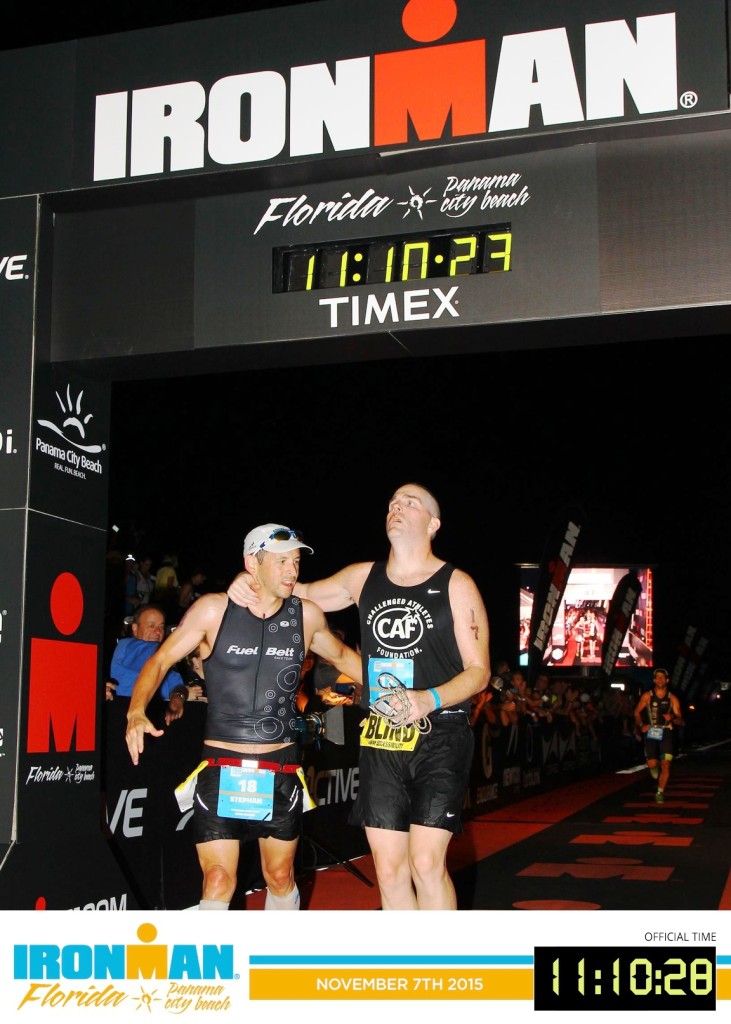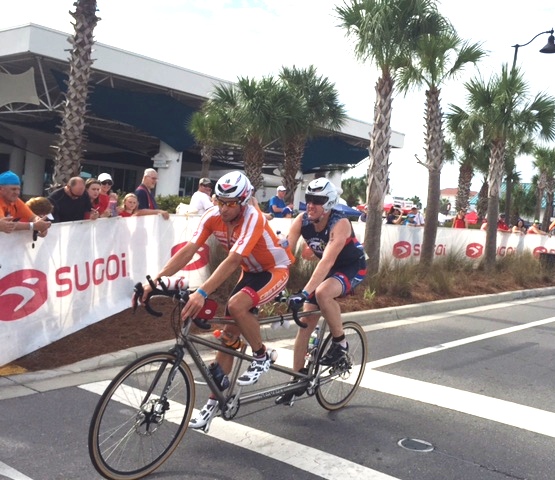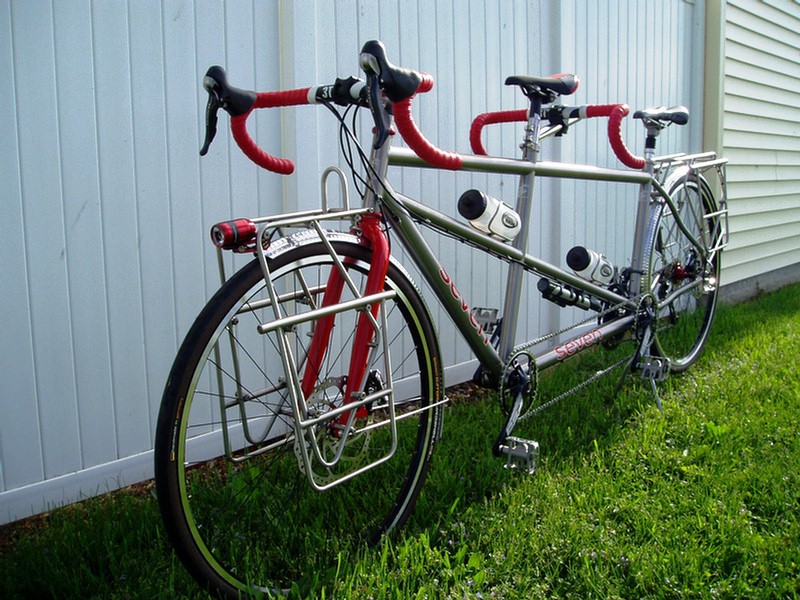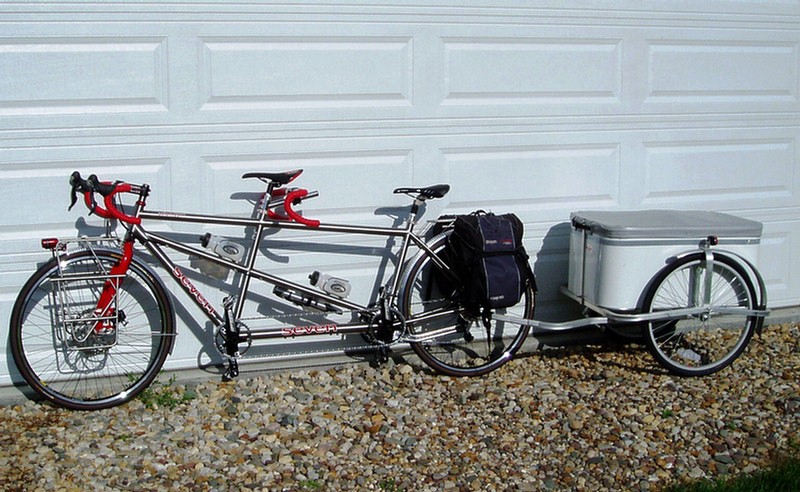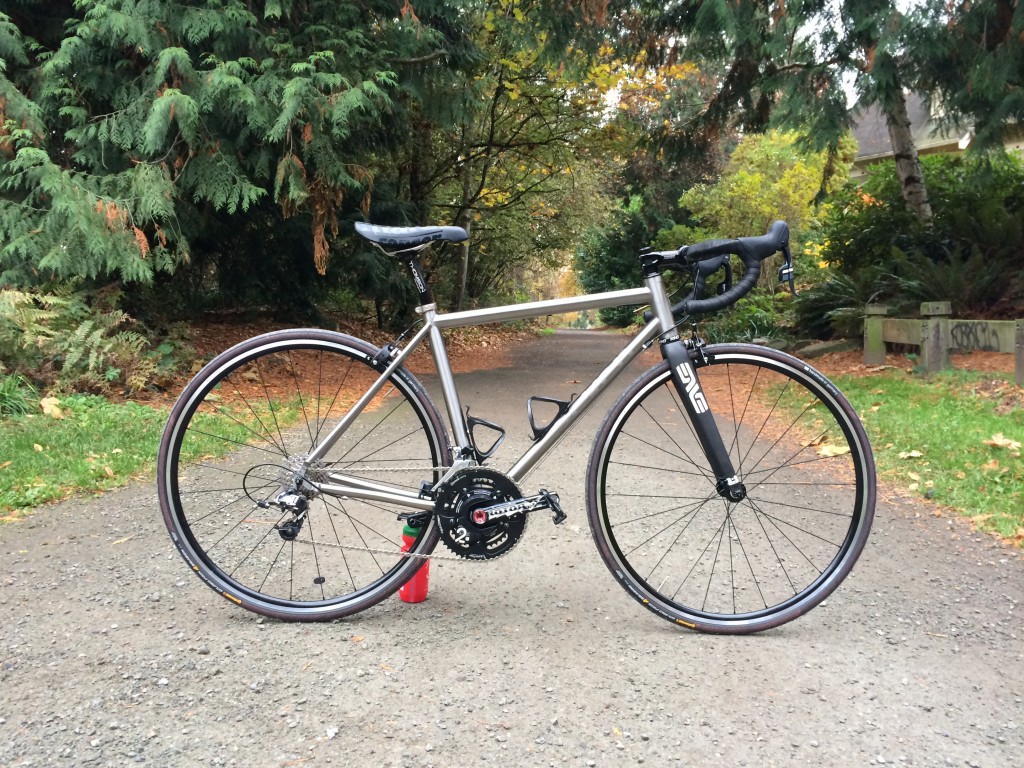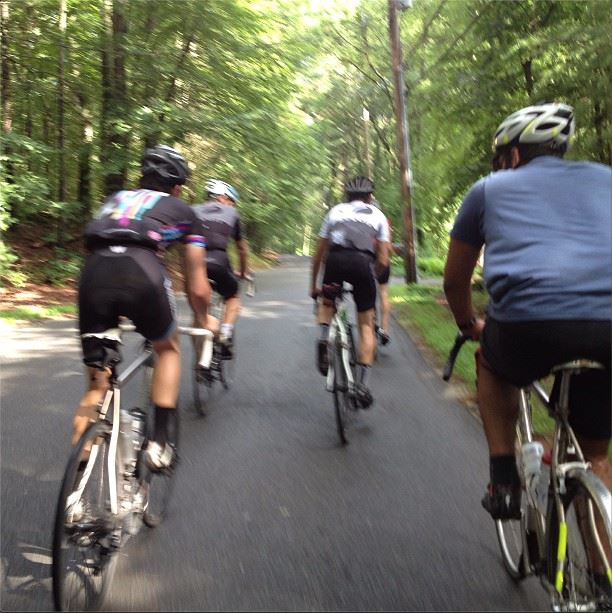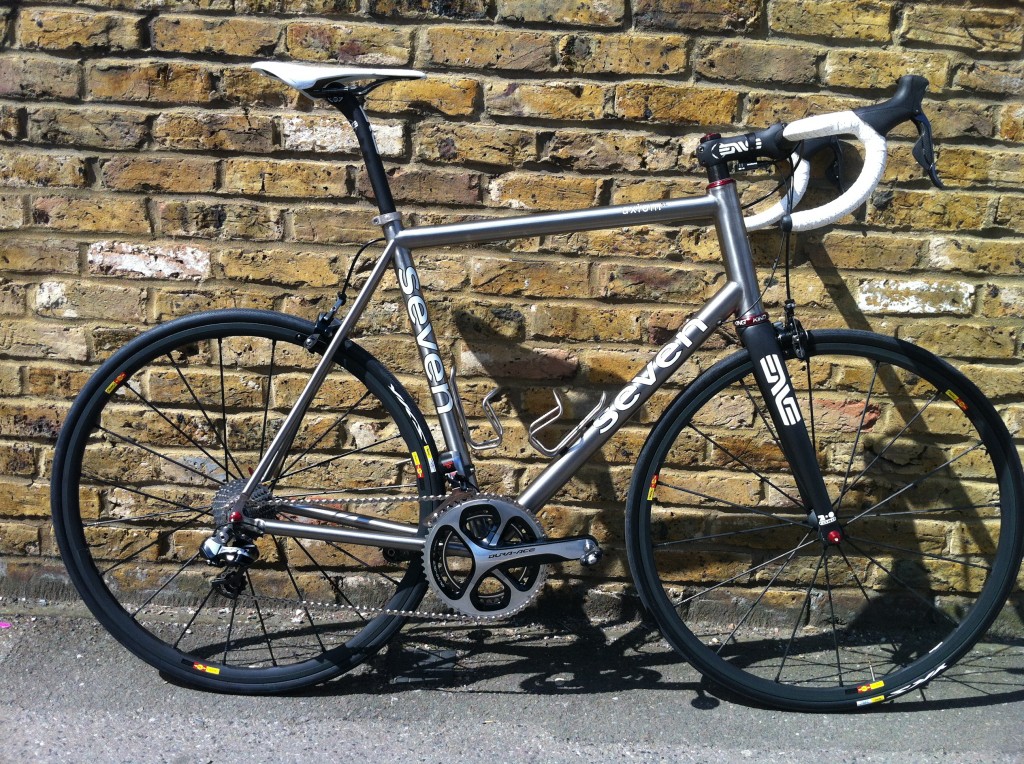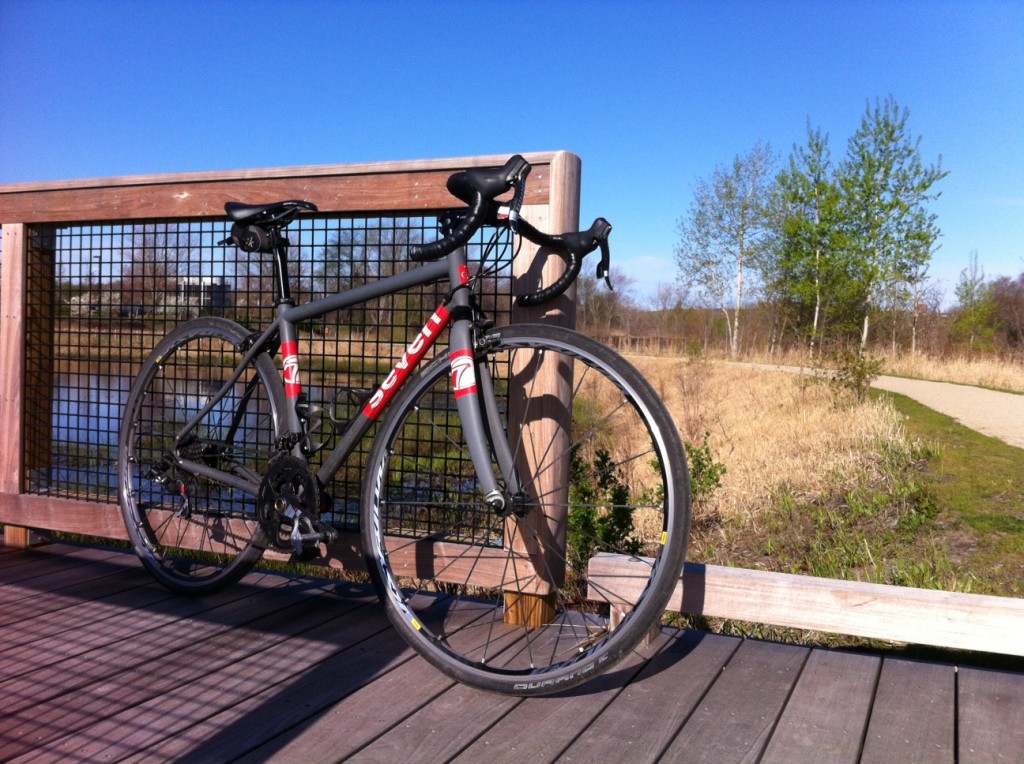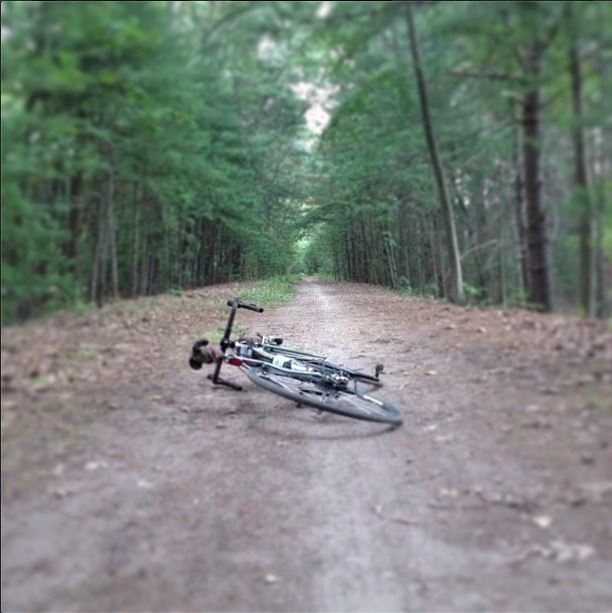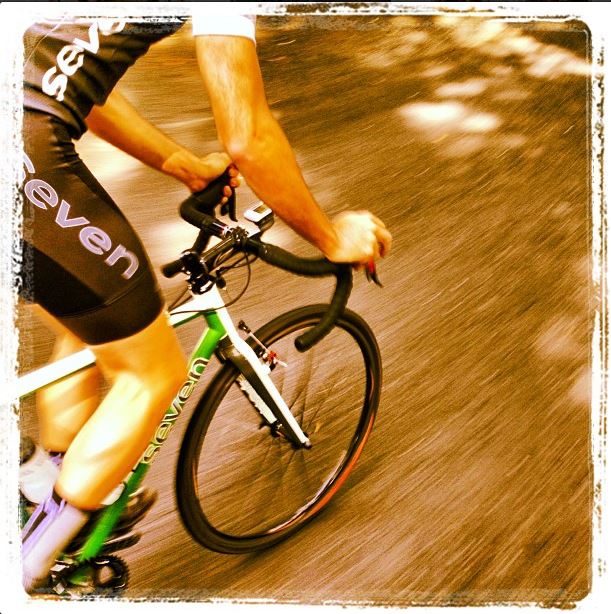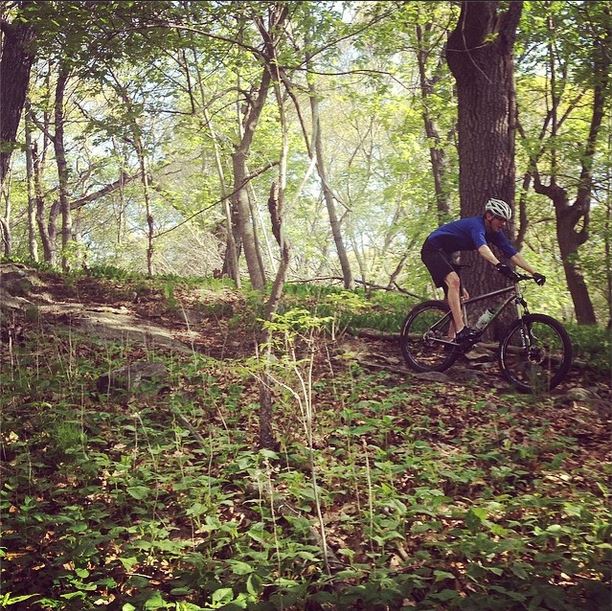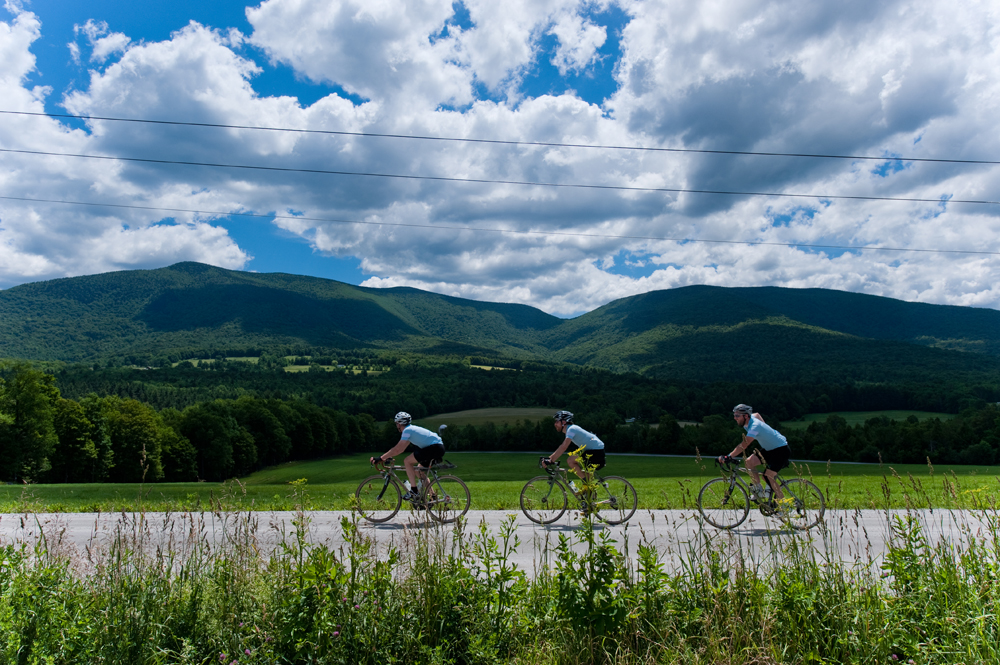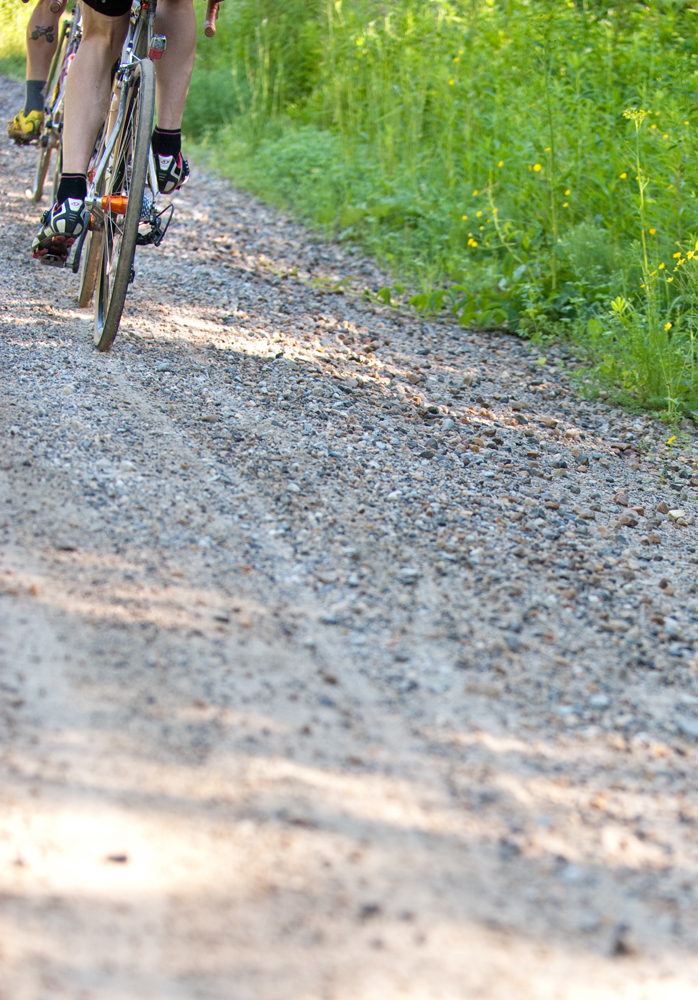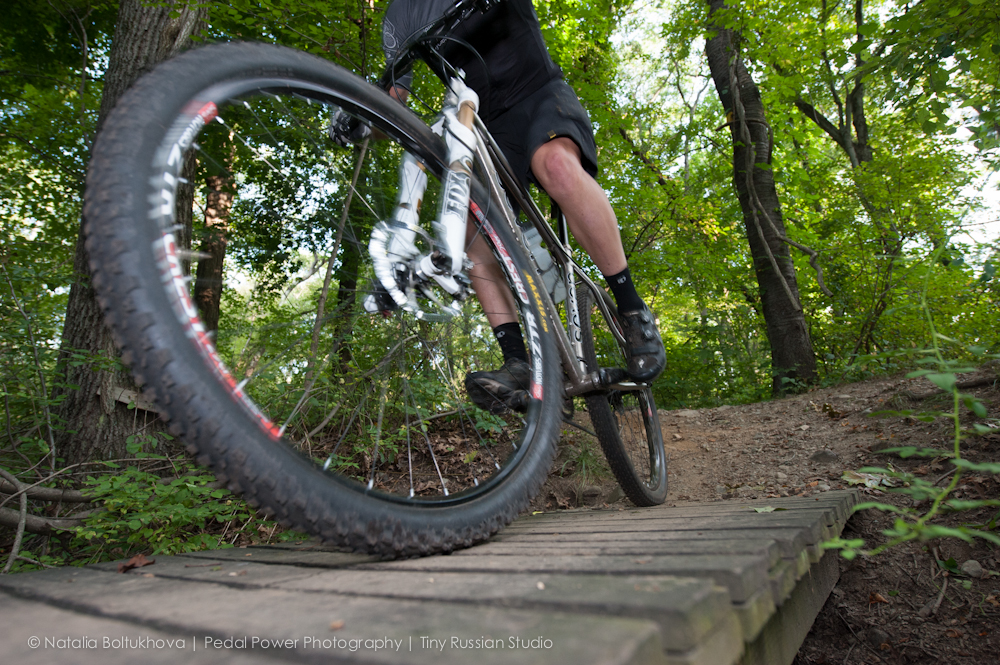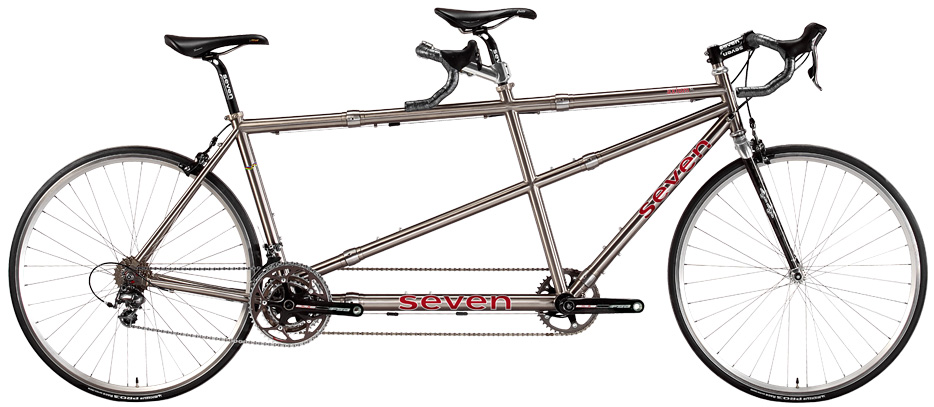Erich Manser is a talented athlete, a fact that can be obscured by the fact that he is blind, which is to say most people who see him at marathons and triathlons notice his blindness, notice that he is being guided, before they notice how quickly he’s moving.
A few weeks ago, shortly after we delivered Erich his new Axiom SL 007 race tandem, he set the world record time for a blind athlete at Ironman distance. What follows is a short excerpt of the story of the race, in his words:
Ironman Florida, 2015
The Swim
For different reasons than the typical triathlete’s, I felt plenty of anxiety before this swim. I’m not usually concerned with waves or wetsuits, equally comfortable in a race where either or both are present. What makes me really nervous, as a mostly-blind athlete, is preserving what little I can see in a race.
In the Physically Challenged (PC) division, we had the benefit of a 10-minute head-start, going at 6:05am. At this moment, I can’t even say what the starting sound was, which probably gives an indication of my mental state at the time. About 20 minutes in, the rising sun brought new anxiety as we rounded a buoy, and I realized I’d be staring directly at it for the swim back to shore. Mercifully, the early sunlight was soft enough to be bearable, framing Steve beautifully like some fictional portrait called “Morning Swimmer”. I knew we had to come through this loop again, however, and our second lap would be crowded with swimmers who’d started behind us.
During the run across the beach, taking water to rinse our salty mouths, I felt particular pride hearing the boisterous Ironman announcer explain “This is highly unusual folks. Yes our PC athletes start ahead of the age-groupers, but it’s rare to see them leading coming in from the swim!”, and my smile widened as we plunged back in.
T1
Another big Ironman difference was being handed bags (bike bag, run bag) at each transition, which contained our gear for each discipline. In a regular race, I have a “system” (read “anal retentive”) where I carefully place my bike-related items in one spot, run-related things in another, following a clockwise pattern around a bright white towel so that everything is visible against the background. These bags had me “fishing around” aimlessly, anxious about what I may have forgotten due to pre-race nerves.
Once again, Steve calmed me. We took our time, double-checking to be sure we had everything, and made our way along. We were out of transition in something like 9 minutes, refreshed and ready.
The Bike
Before the race, Steve mentioned that we wanted to ease in to the bike, find our legs, and not attack it early. We planned to assess at mile 40 to see how we were feeling, and adjust if needed.
We had test-ridden Road Hog, our amazing new Seven Cycles custom, a few days earlier, and I was excited about the clear differences, and the potential gains they could represent.
The sun was up by this point, and we were starting to feel some heat, but the early bike felt breezy enough to cool us. It’s so much fun biking out of transitions, where crowds of spectators are typically more dense, and hearing them just go bananas when you pass by. An absolute, addictive rush.
And speaking of “dense spectators”, here’s an observation: Along most race courses, you have people who, upon seeing someone racing differently (on a tandem, in my case), make comments which seem to suggest we’re some sort of novelty act, there for the sole purpose of adding variety to your day’s entertainment. Things like, “That’s a fun way to do it!” or “A tandem bike, that’s hilarious!”. We’re not. We’re out there working just as hard as everybody else. If you’re reading this, you already know, but please tell others. Rant over.
T2
I have no recollection of this event, even though it appears I was present and it lasted about 7 minutes.
The Run
The next thing I knew, we were out on the run course. Similar to the bike, we were deliberate about easing in to the run. My last bike-to-run workouts felt good & strong, and we knew I didn’t want to exceed 8:35/mile pace at any point during this marathon. Hearing 8:31 as a first mile split, there was relief in knowing we needed to back it off slightly.
These early miles included a barrage of raised speed-bumps, and knowing it was a two-loop course, we knew they’d be an ongoing part of the overall run. Almost mechanically, Steve took quickly to counting down my approach, “3…….. 2…….. 1……. BUMP!”, which worked well. Though the bumps were annoying at first, they became a predictable source of comfort, once we had a system and I was gliding over them without the jostling.
By the time I heard Steve’s wife Roxanne and my girls, Lisa, Ellie and Grace, it happened to be at the same time I was handed my special needs bag. I had again lost track of where we were miles-wise, and it definitely felt sooner than expected. We stopped completely, fully absorbing the love and energy of our loved ones, while I crammed a bunch of Swedish Fish in my mouth. Soon, the girls were urging us on, and the candy I’d imagined tasting so heavenly at that point wasn’t agreeing with me, so we broke out running again.
As we knocked off some more miles, along comes my most feared arch-nemesis: Darkness. I can now appreciate how beautiful the scene must’ve been, running along the beach at sunset, but had little mind for it then. Daylight was abandoning me, and I still had 10 kilometers to go.
My night-blindness strategy was to have Steve wear a head-lamp around his waist, facing backwards with the beam pointed right at me. We used the brightest setting, allowing me to focus on that singular target and follow along.
Fixated on the bouncing light, we navigated twists & turns, brushing past other runners I could only sense or hear by their footsteps and breathing. My elbows made hard contact with more than a few of them, to which I instantly called back “Sorry!”, hoping our Blind/Guide configuration explained further. I imagined locking ankles with one of these people, causing a disastrous end to someone else’s day, a thought I couldn’t bear.
Entirely outside my comfort zone, I knew I had to bear down. I became transfixed on that light bulb, to the point that it and me were the only two things left in the world. I just needed everything else to go away in order to get through this.
When he zagged, I zagged. An interesting lesson for me, as I inch toward blindness, recognizing that sometimes, things that may seem impossible can actually make life easier.
Profound timing for a profound lesson, with the finish line looming. I held my breath, straining my ears for the finish-line announcer.
The Finish
We crossed, 11:10:28. It had been hours since I had any sense of our time, and I felt like my sub-12 hour hopes had left town with that swim split. Not until I heard our girls going crazy, and Steve yelling to Roxanne “He did it!”, did that 11:10 clock time really set in. No Steve, “WE” did it.
Surprised to be walking fine, an attentive race volunteer was helping me wherever I needed to go, which was to be with my family ASAP. I felt great, and let it all wash over me.
World Record
In 2011, when I was racing strong and feeling cocky, I recognized that blind triathletes were relatively rare, in a global sense. Finding myself blessed with some ability for the sport, this led me to believe I might have a reasonable shot at a fastest-time-in-the-world, Blind Ironman record.
From there, I went on to be humbled by knee-surgery and weight gain. I became more immersed in the people and community of a healthy lifestyle. I realized it wasn’t about me. It was about this bigger thing, in which I’m a single participant. I lost sight of the very notion of a world record, or that I could even be capable of such a thing.
Steve didn’t.
Conclusion
Back to the question of whether there could be some advantage when a blind athlete races with a sighted guide.
For me, the answer is YES, when your Guide believes you’re more capable than you know.

